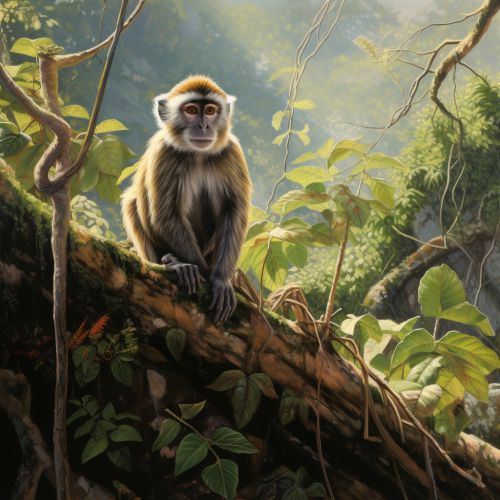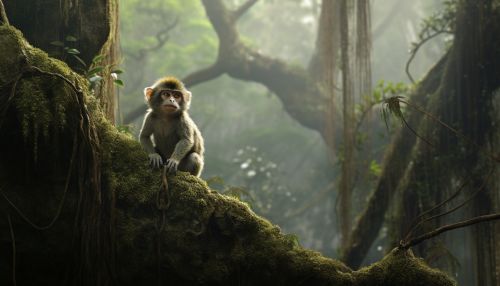Cercopithecidae
Taxonomy and Evolution
The Cercopithecidae, commonly known as Old World monkeys, belong to the primate order Primates. They are native to Africa and Asia, contrasting with the New World monkeys, which are indigenous to the Americas. The family is divided into two main subfamilies: the Cercopithecinae, which includes baboons, macaques, and guenons, and the Colobinae, which includes colobus monkeys and langurs.
The evolutionary history of the Cercopithecidae is complex and has been the subject of extensive scientific research. The family is believed to have originated in Africa during the Oligocene epoch, around 32 million years ago. The earliest known cercopithecoid fossils, such as those of the genus Propliopithecus, date back to this period.


Physical Characteristics
Cercopithecidae are characterized by a wide range of physical features. They are medium to large in size, with males typically larger than females. They possess a tail, which can be either long, short, or absent, depending on the species. The dental formula is the same for all species: 2.1.2.3/2.1.2.3, meaning two incisors, one canine, two premolars, and three molars in both the upper and lower jaws.
The skin color of these monkeys varies greatly, from olive green to gray, brown, or black. Some species, such as the Mandrill, are noted for their vibrant facial and buttock colors. The hair can be short or long, and its coloration can be uniform, patterned, or change with age.
Behavior and Ecology
Cercopithecidae are diurnal and arboreal, although some species are semi-terrestrial. They are highly social animals, living in groups that can range from a few individuals to several hundred. The social structure within these groups can be either matrilineal, as in macaques, or patrilineal, as in baboons.
These monkeys are omnivorous, feeding on a variety of foods including fruits, leaves, seeds, flowers, insects, and small animals. Some species, such as the Proboscis Monkey, have specialized diets and digestive systems to process certain types of food.
Reproduction and Life Cycle
The reproductive strategies of the Cercopithecidae vary among species. Most are polygynous, with males mating with multiple females. Gestation periods range from five to seven months, and females typically give birth to a single offspring at a time.
Infant care is primarily the responsibility of the mother, although in some species, such as the Barbary Macaque, males also participate in caregiving. The lifespan of these monkeys can range from 10 to 50 years, depending on the species and environmental factors.
Conservation Status
Many species of Cercopithecidae are threatened by habitat loss, hunting, and disease. Conservation efforts are ongoing, with several species listed as endangered or critically endangered on the IUCN Red List. These include the Tonkin Snub-nosed Monkey, the Golden Langur, and the Gelada.
